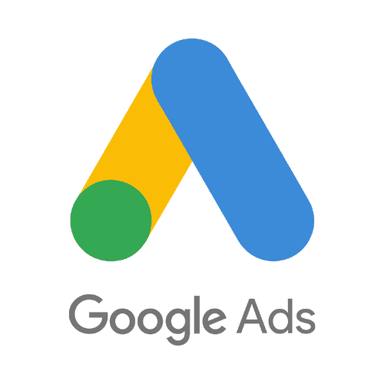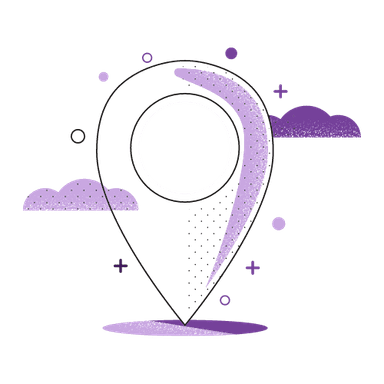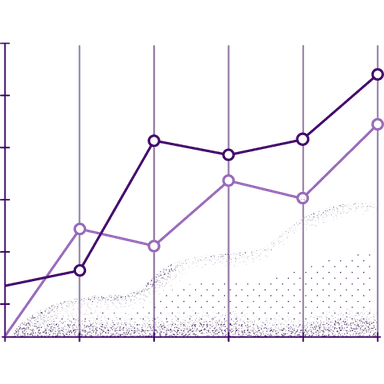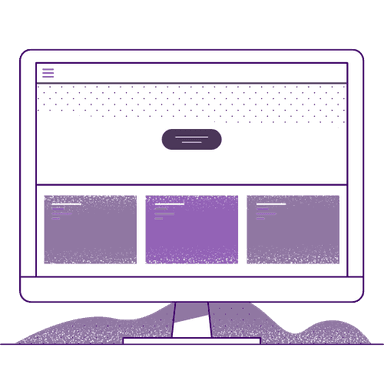Google Ads API Conversion Tracking
Solve reporting and optimize ads in Google Ads by sending conversions to the Google API server-side even for IOS clicks without GCLIDs and offline conversions

Solve reporting and optimize ads in Google Ads by sending conversions to the Google API server-side even for IOS clicks without GCLIDs and offline conversions

Google Ads reporting is a powerful tool to identify ROI of ad campaigns and optimize marketing strategy. However, using Google Tag alone for conversion tracking results in many of the conversions missing from the reports:
Google has added support for IOS 14 privacy-friendly click identifiers (wbraid/gbraid) to its API and rolled out enhanced conversions to most customers since late 2021. Taking advantage of these features requires server-side integration capable of sending special attribution parameters for IOS users and offline and server-side conversions.
Google Ads API server-to-server integration combined with Able CDP server-side tracking and attribution provides powerful tools to understand how your ad spending drives sales and purchases. Able attributes conversions at all stages of the funnel such as successful payments, won CRM deals and starting Stripe subscriptions to the original Google Ads ad clicks and IOS user identifiers and sends conversions to Google Ads API. In lieu of click identifier, Able sends browser identifiers and user identifiers such as email and phone to allow Google Ads to attribute and report conversions from IOS traffic.
Report on currently missing conversions that happen after browser analytics and tracking cookies expire or not available on devices. Able offers built-in tracking to capture ad clicks and user identifiers, associate them with customer details and stores them in its customer data platform. Able Customer Data Platform then attributes conversions to these customers sources and sends conversions with complete customer match parameters to Google Ads, fixing tracking for IOS traffic.
Gain insights into ad conversions in business-specific dimensions. Able attributes conversions to IOS user identifiers and GCLIDs of the original clicks regardless where they happen in your funnel and sends full conversion details to Google Ads API including user identifiers that help to report IOS 14.5+ conversions, as well as Google Ads Custom Variables to segment reported conversions in the Google Ads reports. This allows to use Google Ads optimization and Customer Match audiences can then be set up to use these conversions and their values to refine audience targeting.
Able captures complete journey of each customer, allowing to understand how your customers buy and how segments perform across campaigns even on low volume experimental conversion data while you're still perfecting your pipeline. In addition to providing a built-in user interface to research individual customers' journeys, Able Customer Data Platform integrates with analytics platforms that don't have a 30-day conversion window limitation such as Google Analytics, allowing to understand complete LTV and report performance of the campaigns.

Able CDP is an advanced server-side tracking solution that combines browser tracking with server-side API integrations, linking website activity and Google Ads click IDs with server-side sales to build a complete journey of each customer across website and back-office tools.

Able attributes 99% of sales to the correct visitor, allowing to see the full journey of each individual customer acquired from Google Ads and obtain data to inform strategy.

Skip complex manual set-up of the connection between Google Ads and other software in your funnel. Able already knows how to track GCLIDs and first-party user identifiers that Google Ads uses for IOS traffic, associate sign ups with them, attribute conversions happening elsewhere and send them back to Google Ads API to facilitate platform's AI/ML ad delivery optimization.
Sign up for a free trial account
Install Able tracking code on the website
Connect Able to your CRM, payment system or send custom conversions using its REST API
Connect Google Ads to allow Able to send tracked conversions attributed to the original ad clicks to Google Ads API
Don't see the one you're looking for? Our list of server-side integrations has many more that can be useful.
To comply with Apple App Tracking Transparency restrictions, Google had to start sending WBRAID and GBRAID parameters instead, providing anonymized way to track ad conversions. In this post we discuss the implications, what it means for tracking and how Able CDP can be used to keep tracking conversions for Google Ads traffic without GLCIDs.
Learn more →Google announced updates to Google Ads Customer Match availability and Google Ads API during the last few months. These updates aim to improve reporting that was affected by the April update, which removed unique click identifiers from IOS traffic to comply with Apple App Tracking Transparency restrictions. This post explains what changed, how Google improved reporting by the Customer Match roll-out and Google Ads API v9 changes and what advertisers can do to understand sources of their sales while staying compliant with Apple tracking restrictions.
Learn more →With the ever-changing landscape of online tracking, it can be difficult to keep up with the latest developments. In this article, we explore how third-party cookies, first-party cookies, and other tracking techniques are used to track and attribute conversions and how browsers are responding to these techniques. We also look at how these techniques are affecting the way advertisers and social media networks are able to reach their audiences.
Learn more →Automating Google Ads Customer Match using Google Ads API simplifies managing Google Ads audiences and improves effectiveness of Google Ads targeting optimization. This post summarizes different ways Customer Match is used, which is better for an ongoing campaign and provides step-by-step instructions to automate Customer Match using Google Ads API.
Learn more →Tracking offline conversions is crucial for understanding the true return on ad spend (ROAS) from Google Ads campaigns. While Google Ads does allow uploading enhanced conversions, this method has limitations – conversion tracking relies on Google matching imported customer details to existing user profiles. The match rates tend to be low.
Learn more →In the recent years ad platforms such as Facebook Ads (Meta) and Google Ads began to introduce and promote use of the conversion APIs, allowing advertisers to send more details about their conversions. This article describes how conversion APIs work, why their use is essential and how different implementations can affect their performance. It describes common pitfalls why conversion APIs may not have delivered the desired result and documents approaches to fixing this.Facebook's study has shown that correct use of Conversions API results in increase of CPA by 13% and lead to sale conversion rate by 20% on average; the average is misleading as the figure is funnel dependent. Some funnels may already track all conversions correctly without Conversions API. Others may gain up to a 7x RoAS (return on ad spend) increase and doubling number of tracked conversions in other funnels in our experience.
Learn more →Understanding conversion actions is key to optimizing your ad campaigns. In Google Ads, these actions, which are the steps you want your customers to take, are grouped into conversion goals. To help further refine this process, Google introduces the concept of primary and secondary conversion actions. So, what are they, and how do they differ? Let's explore.
Learn more →Sending conversions to Google Ads API used to add conversion value to Google Ads’ reports, allowing to report on ROI, as well as using performance-based targeting and optimization capabilities. This guide will focus on using server-to-server API integration to send conversions to Google Ads API.
Continuously improve marketing strategy with actionable data produced by Able tracking.

Understand how your customers buy and how segments perform across campaigns even on low volume experimental conversion data when you"re still perfecting your pipeline.

Stream back-end conversion data to Google Ads and Facebook Ads Conversion APIs to facilitate ad platforms" AI/ML ad delivery optimization and to create super effective lookalike audiences in real time.

Use standard tools such as Facebook Ads, Google Analytics and your preferred BI and dashboard software to see exact performance and revenue of each channel and landing page even when sales happen weeks after the initial ad click.
Software companies, e-commerce stores and various types of digital businesses around the world are using Able CDP to fundamentally improve their marketing strategy.
Get peace of mind by choosing a provider that can process customer data regardless of where in the world they are located.